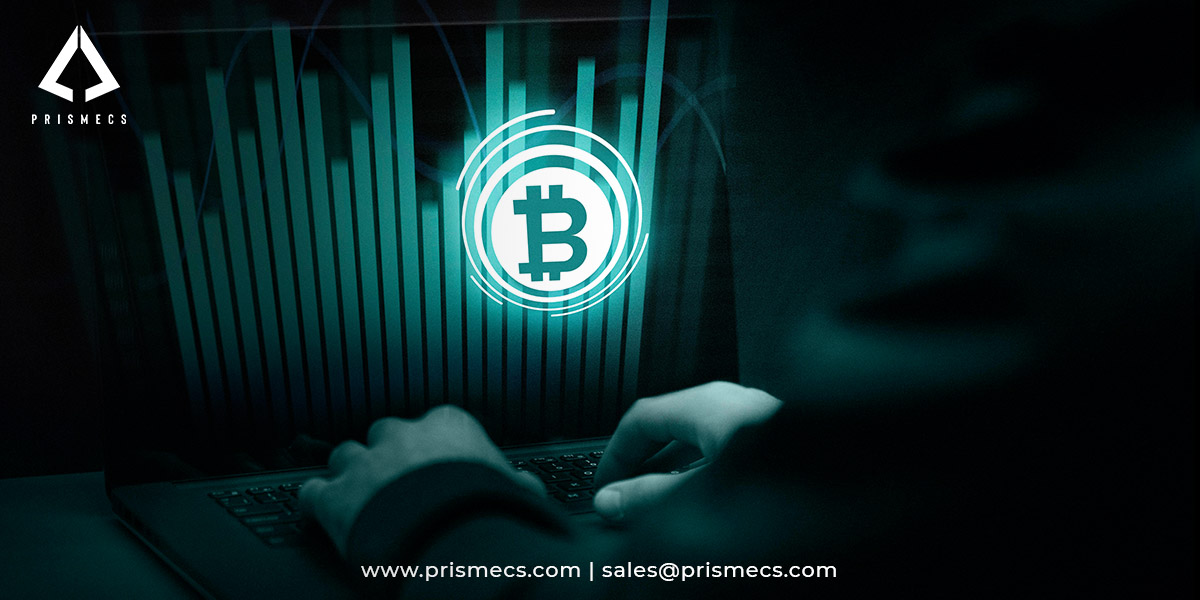
Tech-savvy investors and blockchain enthusiasts have long considered cryptocurrency mining a lucrative venture. But in 2025, the question many are asking is: Is Bitcoin mining still profitable? Or has Bitcoin mining become profitable despite rising costs, increasing difficulty levels, and growing competition?
With increased energy demands, changes in mining algorithms, and growing hardware costs, the profitability of mining has shifted. This comprehensive guide breaks down the top trends in crypto mining for a better understanding. It explores the most profitable coins to mine based on current market conditions and demand. The guide provides actionable strategies that help crypto miners stay ahead in the competitive landscape.
What Is Cryptocurrency Mining?
Cryptocurrency mining is the process of validating transactions on a blockchain network using computational power. Miners secure the network and earn rewards, typically a block reward and transaction fees, for their efforts. However, factors such as power consumption, graphics cards, and operational costs can significantly impact profitability, particularly for home miners.
The two dominant consensus mechanisms in mining are:
Proof of Work (PoW)
Used by Bitcoin and other cryptocurrencies, such as Litecoin and Ethereum Classic. This method requires substantial computational power and high-power consumption to operate effectively. It also needs specialized graphics cards, which further raise operational costs. All these factors contribute to increased operational costs during the process.
Proof of Stake (PoS)
An energy-efficient alternative where users stake their coins to validate blocks (e.g., Cardano, Ethereum 2.0). PoS significantly reduces power consumption, making it a more viable option for users concerned about costs and sustainability.
The State of Crypto Mining in 2025
Mining has undergone significant evolution since the early days of Bitcoin. Initially, CPUs could mine Bitcoin. Then GPUs became the norm, followed by ASICs (Application-Specific Integrated Circuits), which now dominate the Bitcoin network. Today’s cryptocurrency landscape requires more power, innovative strategies, and, in some cases, cloud mining platforms to remain profitable.
One major challenge in 2025 is the rising energy consumption and the increasing difficulty of mining. As more miners join the network, the system increases the complexity of mining a block. The system automatically makes it harder for individuals to compete in the mining industry.
Is Bitcoin Mining Profitable in 2025?
The answer depends on multiple factors:
Bitcoin price
Higher BTC prices can make mining more worthwhile.
Electricity cost
Mining is energy intensive. Low-cost energy is essential for profitability, particularly given the substantial computational power required for verifying transactions.
Hardware efficiency
Newer ASICs offer better hash rates and power efficiency. They suit miners who want to optimize the amount of computational energy used.
Mining pool participation
Joining a Bitcoin mining pool offers more stable and shared rewards for each network participant. It improves overall returns by distributing earnings more evenly among all contributing miners in the pool.
Transaction fees
During periods of high network congestion, bitcoin transaction fees increase, boosting miner earnings.
For many solo miners, Bitcoin mining is not profitable without cheap electricity and efficient rigs. However, miners can still earn positive returns by mining at scale or through pooled resources. Bitcoin mining remains viable in a blockchain-powered environment that operates without centralized authority.
Most Profitable Cryptocurrencies to Mine in 2025
Beyond Bitcoin, several cryptocurrencies are easier to mine and offer better returns for miners without institutional resources. Various algorithms mine these coins, supporting a wide range of hardware and use cases.
Bitcoin (BTC)
Algorithm: SHA-256 | Consensus: PoW
Best suited for: ASIC miners
Profitability Tip: Only profitable with efficient ASICs and low energy costs. Join Bitcoin mining pools for consistent payouts. Always be aware of the risks, including the potential for a 51 attack on smaller networks.
Ethereum Classic (ETC)
Algorithm: Etchash | Consensus: PoW
Benefit: Still mineable with GPUs; ASIC resistant to some extent
Energy Profile: Moderate
Use Case: Smart contracts with a secure, immutable chain powered by blockchain technology.
Monero (XMR)
Algorithm: RandomX | Consensus: PoW
Benefit: Prioritizes privacy; ASIC resistant
Hardware: CPU and GPU-friendly
Why it’s profitable: Lower hardware costs make XMR popular with DIY miners seeking independence from centralized authority. Anonymous transactions also attract miners who want privacy and control over their operations.
Dash (DASH)
Algorithm: X11 | Consensus: PoW
Feature: Masternode rewards and fast transactions
Why mine: Popular for its hybrid model and community support among a wide range of network participants.
Chia (XCH)
Algorithm: Proof of Space and Time
Unique Angle: Uses hard drive space rather than processing power
Eco-benefit: Lower energy consumption benefits green crypto miners who want to cut high electricity costs. It also helps reduce their computational demands while supporting energy-efficient mining operations.
Crypto Mining Strategies to Boost Profitability
If you want to mine successfully in 2025, it's not just about the coin. Your strategy matters just as much as you do. Here are the essential key takeaways to optimize your mining operations:
Choose the Right Hardware
ASICs: Ideal for Bitcoin but costly. Designed specifically to solve consensus algorithms quickly.
GPUs: More general purpose and better for Ethereum Classic and similar coins.
ASIC-resistant options: Consider Monero (XMR) or Chia for lower entry barriers and more decentralized network security.
Join a Mining Pool
Instead of mining solo and waiting to create new blocks, Bitcoin miners join mining pools to combine their efforts and share the rewards. This approach helps add blocks to the blockchain more consistently. It provides a steadier income and reduces risk.
Use Renewable Energy
Many miners utilize substantial amounts of computing power and energy during their operations. They now switch to solar, hydro, or wind power to reduce energy costs. Not only does this reduce costs, but it also supports sustainability and long-term sustainability.
Monitor Market Conditions
Bitcoin price, transaction fees, and network difficulty change frequently. Stay updated to adjust strategies and switch between coins if needed. This flexibility can influence your success in mining each block of transactions.
Consider Cloud Mining Platforms
Cloud mining platforms let users rent hash power from a remote data center. While upfront costs can be high, this model suits individuals who lack space or expertise. It offers a cost-effective solution and supports users without a technical background or limited installation space. These platforms provide an alternative route to participate in network security without requiring hardware ownership.
When Is Bitcoin Mining Not Profitable?
There are specific scenarios where Bitcoin mining is not profitable, including:
High electricity rates
Make mining unfeasible even with the latest ASICs, given the high amounts of computing power required.
Outdated hardware
Older devices can’t compete in terms of efficiency and may struggle to solve modern consensus algorithms.
Low Bitcoin price
This makes mining less rewarding and may not justify the cost of creating new blocks.
High network difficulty
Reduces your chance of mining a block of transactions without pool participation.
In such cases, it may be more prudent to consider alternatives like Monero or Dash. Cloud mining platforms also offer lower upfront investment and contribute to network security in different ways.
At the Bottom Line
So, is Bitcoin mining profitable in 2025? It can be, but it’s not as simple as it once was. With increasing difficulty levels, rising energy consumption, and competition from institutional miners, individuals must approach the market strategically.
Smart crypto miners diversify their portfolios, leverage cloud mining platforms, monitor transaction fees, and prioritize hardware efficiency to optimize their operations. Exploring ASIC-resistant coins like Monero (XMR) or eco-friendly options like Chia offers accessible opportunities. Crypto mining remains a viable income stream for those who conduct thorough research, manage risks effectively, and adapt quickly.
Tags: Is Crypto Mining Still Profitable Crypto Market Making Blockchain Mining Mining Cryptocurrency Profitable Mining Cryptocurrency Crypto Miners
recent posts

Petrochemicals
6 minutes read
Petrochemical EPC Services for Complex Plant Projects
Petrochemical EPC services are designed to manage complex plant projects, brownfield integration, strict regulations, and tight schedules.

Renewables
5 minutes read
How Renewable Energy Systems Work Efficiently
Discover how renewable energy systems work efficiently to provide affordable, zero carbon energy, overcome storage challenges, and power for a sustain...

I and C Services
7 minutes read
Expert Commissioning Services for Safe, Efficient Operations
Learn how expert commissioning services support safe, efficient, and reliable energy operations across complex industrial and power systems.

Green Hydrogen
7 minutes read
Green Hydrogen Plant Technology Guide
Discover how a green hydrogen plant works, its key technologies, and its role in clean energy. Explore solutions for scalable, carbon-free hydrogen pr...